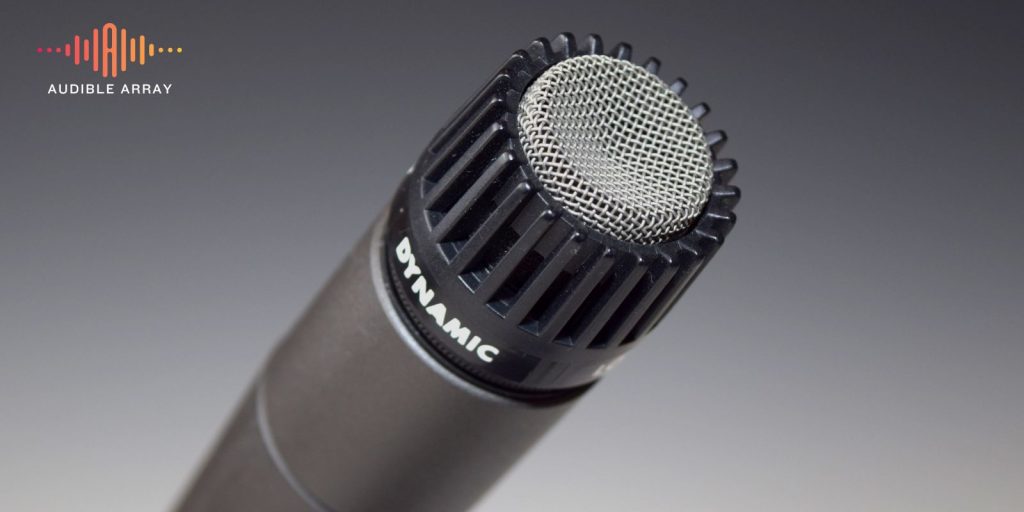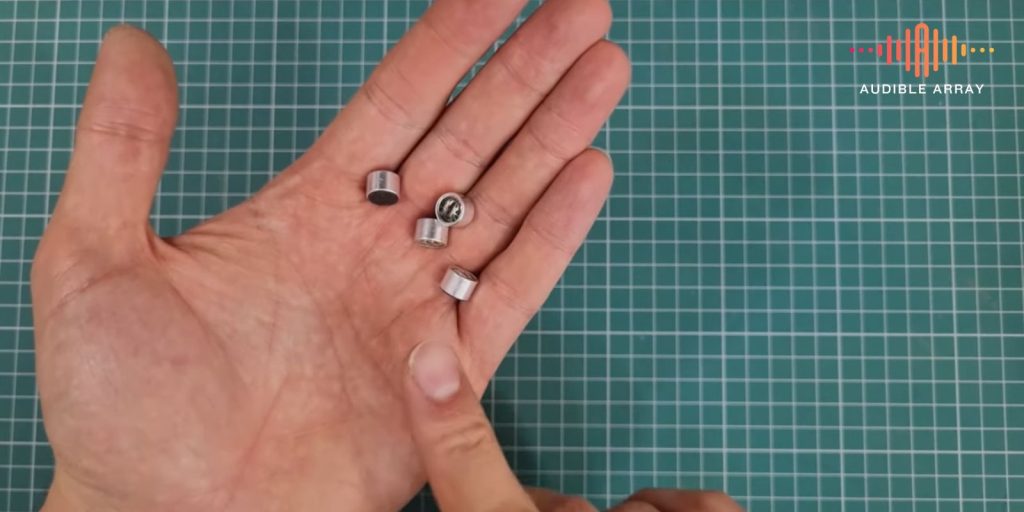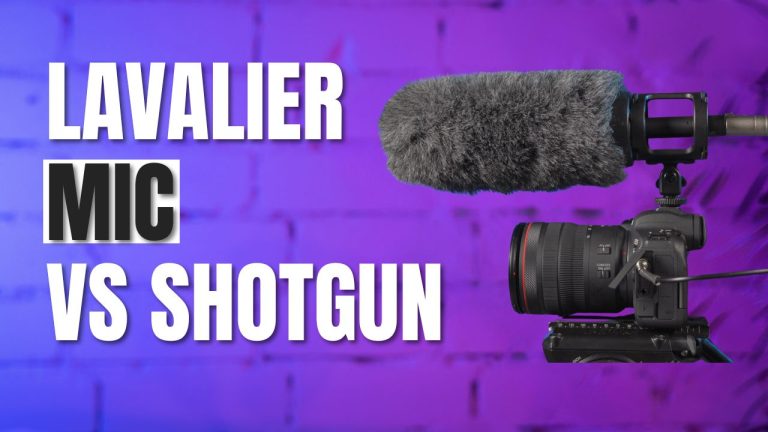Electret vs Dynamic Microphone: The Best Choice for 2024 Recordings
A magnet is a vital part of both dynamic and electret microphones but has a very different purpose and application in each of them. Let’s understand how.

Electret and dynamic microphones are very different from one another, in terms of design, operational principles, and applications. While dynamic microphones are great at recording loud sounds in an outdoor environment, electret condenser microphones are typically preferred for consumer electronics because of their small and compact sizes.
There are some aspects of audio recording where the features of dynamic mics and electret condenser microphones may overlap, but the applications are largely different. Electret mics are often considered condenser microphones, and hence compared with dynamic microphones, but this analogy is a little misunderstood.
It is true that electrets are condenser microphones, but they are what we generally consider a “true condenser microphone”. This article will explain why electrets are considered true condensers and what makes them different from dynamic microphones.
Let’s get to it.
Electret Condenser Microphones – Why Are They Not Considered True Condenser Microphones
An electret condenser microphone is a type of capacitor mic that works on electrostatic principles. Like a condenser microphone, the capsule detects a change in voltage because of the diaphragm movement owing to sound waves and converts it to an electrical signal. However, unlike true condenser microphones, there is no electrically charged backplate. It uses a fixed charge to keep the plate polarized even in the absence of an electric charge, thus eliminating the need for phantom power.

The material used to produce an electric field and polarize the capsule instead of an electrically charged backplate is known as “electret”, hence the name electret microphones. These mics are not considered true condenser mics because the way they keep the capsule polarized is different from the traditional condenser microphones.
The design of an electret condenser microphone is very simple and compact, allowing manufacturing to use it in consumer electronics such as smartphones, tablets, laptops, and other devices that can process audio input.
Benefits of Electret Condenser Mics
The unique design and mechanism of operation offers several benefits, which make these microphones a decent choice for a lot of applications. The benefits include;
1. Compact Size
The obvious benefit of a simple design is the compactness it provides. You can make these microphones in a body of a fraction above a centimeter. It is a unique characteristic that most other mics lack and thus makes it the ideal choice for consumer electronics. You can use them in cameras, smartphones, laptops, tablets, and other smart devices that require sound input.
2. Cost Effective
The simple design of the electret microphone is also cheap to manufacture. Electret can be sourced at inexpensive prices and it is widely available. So, it is an area where manufacturers can cut corners to make their product affordable without compromising too much on the quality. It is exactly why most budget electronics like smartphones, cameras, and tablets use electret mics to record audio.
Furthermore, these mics can easily be integrated with other devices. So, the labor cost is also what brings the cost of the entire product even lower.

3. Decent Enough Sound Quality
Although the sound quality of electret mics could be better than true condenser microphones or even dynamic mics, it is good enough for most users. Someone who does not need professional-quality audio will not mind the output produced by electret mics. The frequency response, sensitivity, and other parameters may not be exactly what professionals demand, but they are good enough for average users.
4. Versatility
The small and compact design of the electret microphones allows manufacturers to incorporate them in almost all electronic devices. They can be designed into ribbon microphones, aviation headsets, hearing aids, security systems, and underwater communication devices. Electrets can also be incorporated into automobiles, telecommunication devices, and noise-cancellation systems.
5. Durability and Consistent Performance
The electret, the key part of these microphones, wears down slowly over time and maintains a consistent performance. It is in contrast to true condenser microphones because their backplate can wear down owing to electrical current. So, not only does it help the electret maintain a consistent performance without requiring any maintenance, but also improves its durability, allowing it to last longer.
Drawbacks of Electret Mics
The design of the electret mics has some inherent flaws which limit its applications for several purposes. The drawbacks include;
1. Inability to withstand higher temperatures and humidity
Electret mics are not great when it comes to withstand higher temperatures and humidity levels. Such environmental conditions modify the sensitivity of the mic and cause it to malfunction. It is also why they are not used in high-end laptops and smartphones because the overheating of boards can compromise their performance.
2. Subpar Audio Quality
Electret mics have subpar audio quality, especially when compared with dynamic and condenser mics. They have lower signal-to-noise ratio, sensitivity, and all the other parameters that help a microphone deliver professional audio. So, if you are looking to get professional-grade results, an electret mic is not a good option.

3. Lower Max SPL
Max SPL is the ability to withstand loud sounds which is not what electret mics are designed to do. The output of these mics quickly deteriorates the moment you subject them to loud volumes. You will experience distortion, rendering the audio useless.
4. Lack of Controls
The simple design of these microphones lacks controls, which are available in a dynamic and condenser microphone. You can not adjust the gain, volume, or frequencies that should not be recorded by the mic. It is a basic type of microphone, which cannot do much besides converting the sound waves that hit the diaphragm to electrical signals. You can control some part of it via software, but it is nowhere as good as what you can do with dynamic mic and true condensers.
Dynamic Microphones – How Do They Work and What Makes Them Great For Loud Sound Recording
Dynamic mics are based on the principle of electromagnetic induction. The capsules of a dynamic microphone comprise a diaphragm, which is a thin, movable membrane, a metallic coil attached to the diaphragm, and a permanently placed magnet.
As the sound waves strike the capsule of a dynamic microphone, it moves the coil within the magnetic field produced by the magnet. The movement of the coil within the magnetic field generates electrical energy, which is then processed by the microphone as a sound signal.

Each sound wave has a different frequency so the degree of movement and consequently the electrical current generated by that movement differs on different frequencies. It allows the microphones to differentiate between different notes and offers more detailed and transparent audio.
Unlike traditional condenser mics, it does not require an external power supply as the movement of the voice coil within the magnet can produce an electrical current in the absence of phantom power. This moving coil mechanism is also more rugged than the condenser’s capsule, allowing it to withstand higher sound pressure without producing distortion in the final output.
Benefits of Dynamic Mics
Dynamic mics are used for a wide range of applications in the audio industry mainly because they offer the following benefits;
1. Portable and Easy to Operate
Dynamic microphone operates in the absence of phantom power, making it easy to handle and portable. You do not need extra equipment to make a dynamic mic work. Furthermore, they have a rugged construction, allowing you to travel with them without worrying about the damage it may cause to the microphone.

2. Excellent Noise Rejection
Dynamic microphones can have different polar patterns, but those with unidirectional patterns offer incredible off-axis rejection. A unidirectional microphone picks sound from only one direction, while blocking the sound waves from audio sources, making the audio clear of background noise. While a condenser mic can also have a directional polar pattern, it is not as great at blocking unwanted sounds because of higher sensitivities.
3. Excellent Sound Quality
Dynamic mics have much better sound quality than an electret condenser microphone. It offers better sensitivity, frequency response, and most importantly high max SPL. You can use dynamic microphones to broadcast live, for musical performances, and to record loud instruments in studios.
Furthermore. dynamic microphones can handle sound pressure better than the other types of microphones. It increases their max SPL, allowing them to record loud sounds such as those produced by drums, electrical guitars and violins.
4. Versatility
Modern dynamic microphones have improved a lot when it comes to recording vocals. Companies are now producing mics with tailored frequency responses to record detailed and rich vocals. Although it can still not compete with a condenser microphone, in terms of richness and transparency, these microphones have come a long way. It has made them even more versatile, allowing you to purchase one mic and use it for almost all purposes.
Drawbacks of Dynamic Microphones
There are some drawbacks to using dynamic mics which may limit their applications. These include;
Frequently Asked Questions

Sharoon Shahid
Hi! I’m Sharoon Shahid, founder of Audiblearray. With a decade of experience in using mics, I’m here to guide you on your audio journey and save you from gear pitfalls!






